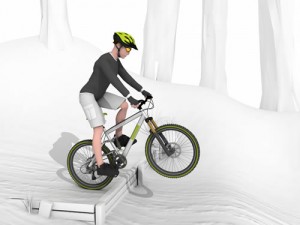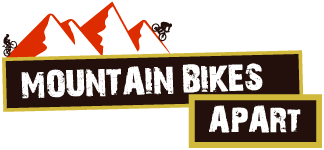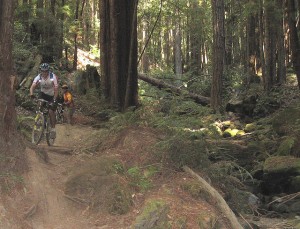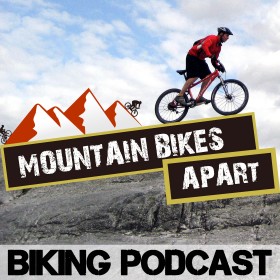This is one my series of articles on core Mountain Biking skills. Have a look at my other bikes skills articles here. But, for today, we’re talking Manual Drop Offs.
What is a Manual Drop Off?
So, what is a manual drop-off and when do we use it? A manual drop-off is when you take a drop by keeping your front wheel high, and landing on the flat with both wheels together.
This technique allows riders to perform a controlled drop to a lower section of the trail whilst carrying some momentum and it’s mostly used when the drop is too high or steep to roll down. Or, of course, because it’s much more fun!
But before we start to look at performing one, or any other mountain bike skill for that matter, we are going to take a brief look at the mind.
The Psychology of Tricky Mountain Bike Skills
In my experience it would appear that, generally speaking, children learn quicker than adults. A sweeping stereotype, I know, but bear with me. Children are not burdened by the experience of falling off and the pain that sometimes accompanies that. Unlike many adults they focus on what they want to achieve, not the consequences of what happens if it goes wrong! This is a key point. Emptying your mind of the negative thoughts can and does help you achieve the desired outcome. So when you head out to try any new skill, think positive!
Ok, sermon over.
The Cone of Movement
Drop offs are successfully achieved by using momentum, weight shift and having an understanding of the cone of movement (COM). Note that I didn’t mention pulling up on the handlebars!
The cone of movement is basically a way to describe your weight pivoting around the bottom bracket. Whether the bike is pointing up or down, leaning left or right, you should be able to draw an imaginary vertical line through your core (the area round your hips) and the bike’s bottom bracket. Weight shift and the cone of movement – if you don’t move you will fall off.

How to Drop Off with Panache
OK, so we have a positive mental attitude, we aren’t going to pull up on the bars and we are going to use the COM. We’re almost ready to perform a drop off. There are some other key points that we need to be aware of:
- Approach the drop off in the ready position, we all know what this is don’t we. (Stand up on your pedals, pedals level, knees and arms bent so that you’re ready to absorb the trail).
- Remember we need momentum.
- Look ahead to where you want to land. Generally speaking you go where you look!
- As you near the drop compress your forks. Lift your weight first, then push down on the suspension.
- Just before the edge of the drop, move your weight back – think bum near rear wheel.
- Just as your front wheel goes over the edge, drop your heels and imagine pushing your legs forward.
- As the rear wheel leaves the edge return your torso to the centre of the bike. Why I hear you ask? Well this allows you to match the bike angle to that of the landing.
- A flat landing ideally wants both wheels landing at the same time. A downhill landing, the front wheel just before the rear.
- You are relaxed anyway so use your arms and legs to absorb the impact.
- Ride on with a big grin, or session the drop off to get better and smoother!
Remember practice makes permanent, which is great if you are doing it correctly, but not quite so good if you are doing it wrong…… Think about getting someone to record your attempts. Remember that changes in your approach that feel large to you can be almost imperceptible to the eye, so exaggerate them!
Let me know what you think of the guide. If you have any tips you think I should add, or feedback on the steps, drop me a comment below.
I’d love to hear from you!
Image Credits: jurvetson on Flickr and Cycling Scotland www.gomtb.org.uk
This article was written by Neil over at MCYS.



I enjoyed this article very much. This guide brings me a lot of useful things. I was able to achieve higher speeds, master balance skills, and train myself to have full control of the bike.
Bikes that are equipped with riser bars, short chainstays, and flat pedals are the easiest to do a manual on.